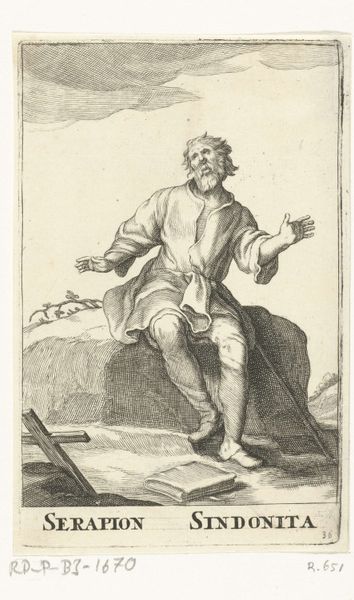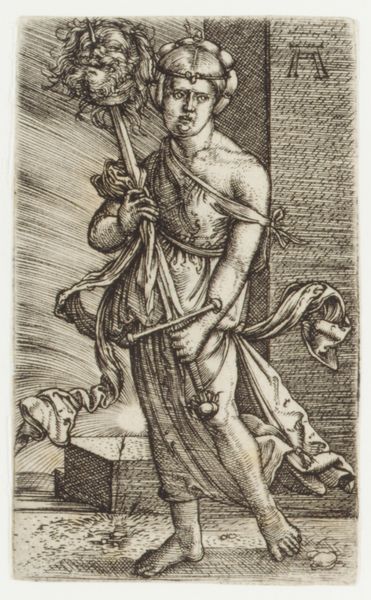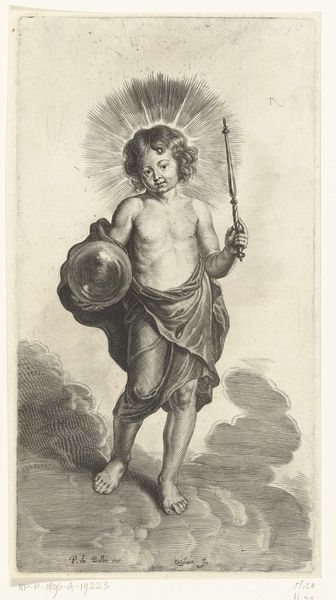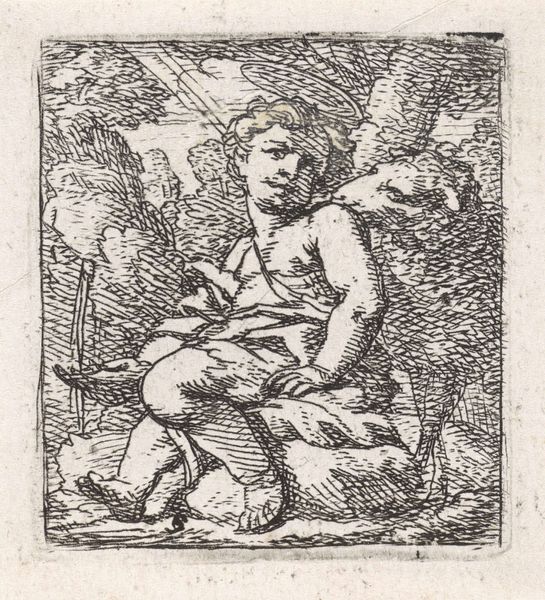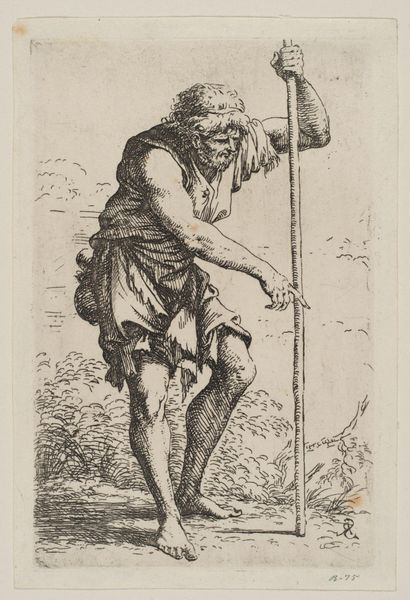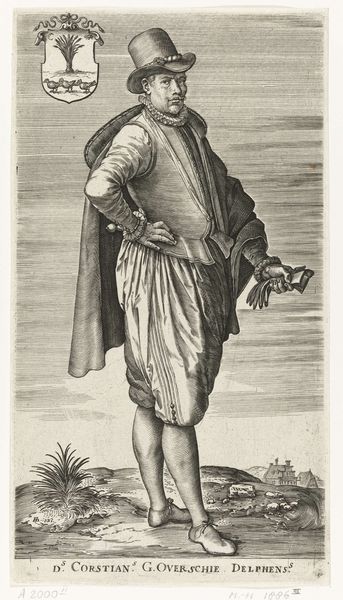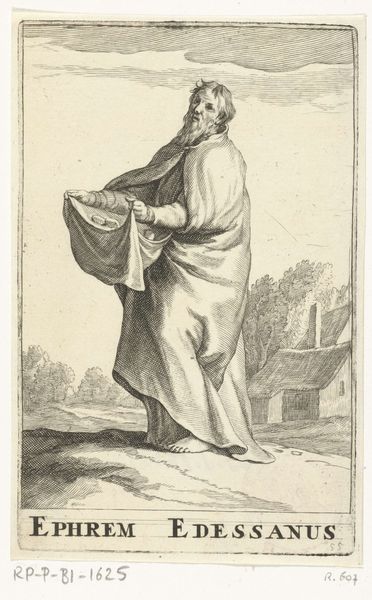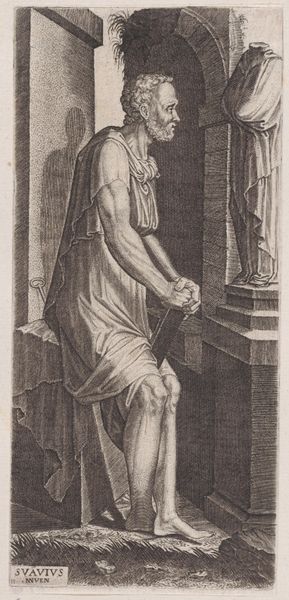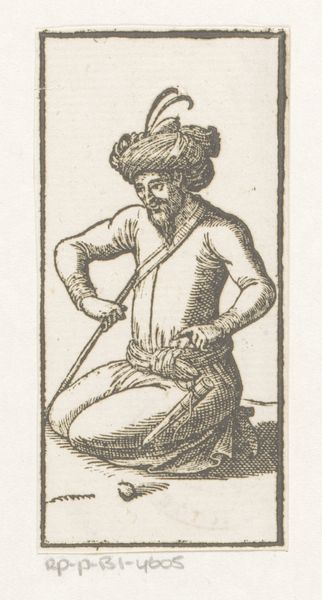
painting, oil-paint
#
portrait
#
baroque
#
painting
#
oil-paint
#
oil painting
#
genre-painting
#
history-painting
Dimensions: height 39 cm, width 31 cm
Copyright: Rijks Museum: Open Domain
Curator: Here we have "An Albanian Sailor," an oil on canvas painted between 1700 and 1737 by Jean Baptiste Vanmour. Vanmour was a French-Flemish painter known for his depictions of life in the Ottoman Empire. Editor: He looks…determined, almost defiant, doesn't he? There’s a stiffness in his posture, despite the casual way he’s draped the jacket over his shoulder. And the almost confrontational gaze… Curator: Precisely. This painting exists within a specific historical context. Vanmour was the official painter to the French embassy in Constantinople. His paintings, therefore, played a significant role in shaping Western European perceptions of the Ottoman world. They were circulated as engravings and tapestries, becoming part of the visual vocabulary through which Europeans understood, or rather, constructed the "Orient." Editor: The details of his clothing become powerful symbols, then. The turban, the sash, the cutlass tucked at his waist—they aren't merely descriptive. How do you interpret them? Curator: They represent a careful, stylized documentation for the European market. These paintings contributed to the broader genre of "Turqueries"— a fascination with Ottoman culture that, while seemingly celebratory, often reinforced existing power dynamics and stereotypes. These images were consumed by European elites eager to see a curated, "exotic" version of the Ottoman Empire, devoid of true political context. Editor: So, the image fulfills a European fantasy while simultaneously defining the Albanian sailor as "other." But his gaze almost subverts that, doesn't it? It challenges the viewer. I wonder, to what extent Vanmour was conscious of that tension. Curator: It's hard to say definitively. Vanmour’s position as a court painter certainly influenced his artistic choices. But it's important to remember that these images didn't exist in a vacuum. The perception of these images shifts over time. They served diplomatic functions, feeding the European market. And still today, his images create meaningful connections for people searching for a shared cultural identity. Editor: I see the symbolism playing on different levels. This image can speak to identity, to representation, and even to defiance. Looking closer reveals it has a much more nuanced story. Curator: Absolutely. Analyzing this painting unveils the intricate ways that art functions as both a reflection of its time and a shaper of future perceptions.
Comments
No comments
Be the first to comment and join the conversation on the ultimate creative platform.

